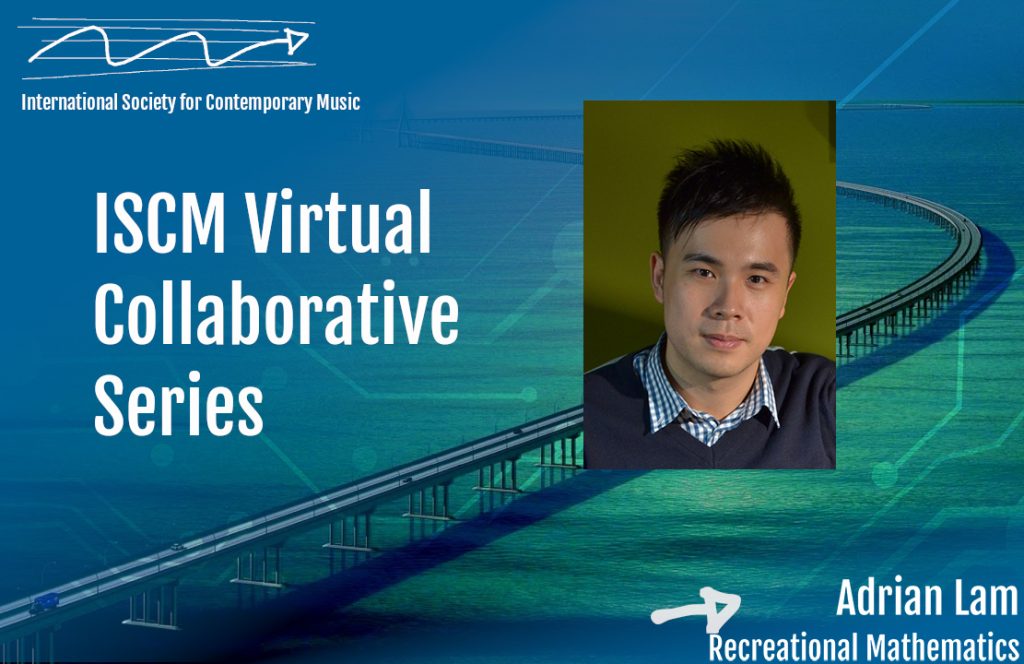Adrian Lam: Recreational Mathematics

Adrian Lam graduated with a degree in Mathematics from the University of Oxford and obtained his M.Phil. in Music from the University of Hong Kong. He learned the piano with Eva Lue, Colin Stone and Raymond Fischer, and studied composition with Christopher Colemen, Christopher Keyes and Joshua Chan. He holds a distinction in LTCL Piano, the first prize in the James Poke Composition Competition in the UK, and the first prize in the New Generation. His work Separated from the Human Labyrinth of Asakusa Temple was awarded the first prize in the International Shakuhachi Chamber Music Competition in Melbourne, and was later performed in New York. Lam studied under Miguel Mera and David Matthews at Dartington International Summer School with a scholarship, where his Red’s Dream (collaboration with PIXAR) and Five Pieces were premièred. His Suite for Shakuhachi and Piano One Day Holiday was premièred in Tokyo and Osaka, and commissioned work Summer Snow was featured in Musicarama 2012. Lam takes a special interest in the relationship between mathematics and music. He has been regularly invited to lecture on the two subjects at the Colorado College, US. He established the Hon Lam Mathematics and Music Studio, and is a music diploma programme instructor at the School of Continuing and Professional Studies, the Chinese University of Hong Kong.
Recreational Mathematics is a multimedia quartet for shakuhachi, erhu, cello, and piano with motion pictures. The composer writes:
I had been holding my pen for nearly half an hour, and all I could come up with was just five parallel lines: there was not even a time signature. I decided to dig out the trash under my piano, those old carton boxes, one by one. I looked into all my manuscripts, but none of the sketches seemed to be useful for my new piece. During the search I found an old mathematics notebook that I used during my childhood. It has been many years since I last came across those recreational mathematics problems, the “outside syllabus” problems, the “non-exam type” problems. I read through the entire notebook. All the solving methods were still fresh in my mind.
There are lots of interesting riddles in mathematics based on fascinating topics. Some of the tricks involved are so unique that one can never forget, will never forget and dare not forget!
This piece consists of three continuous sections.
I Chalk Animation
The solo shakuhachi introduces the recurring theme.
II The Riddles
The recurring theme begins to transform as the mathematical riddles are being stated in the motion images. The variations score up the texture through a scherzo, a mini fugue, and two cadenza-like sections for the erhu and the cello.
III The Hints
The real identity of the cadence is the introduction of an old but meaningful Cantopop theme quotation. The piano part becomes virtuosic until the coda, where the shakuhachi plays the final call of the recurring theme, concluding the piece with all the voices together in perfect unison.
